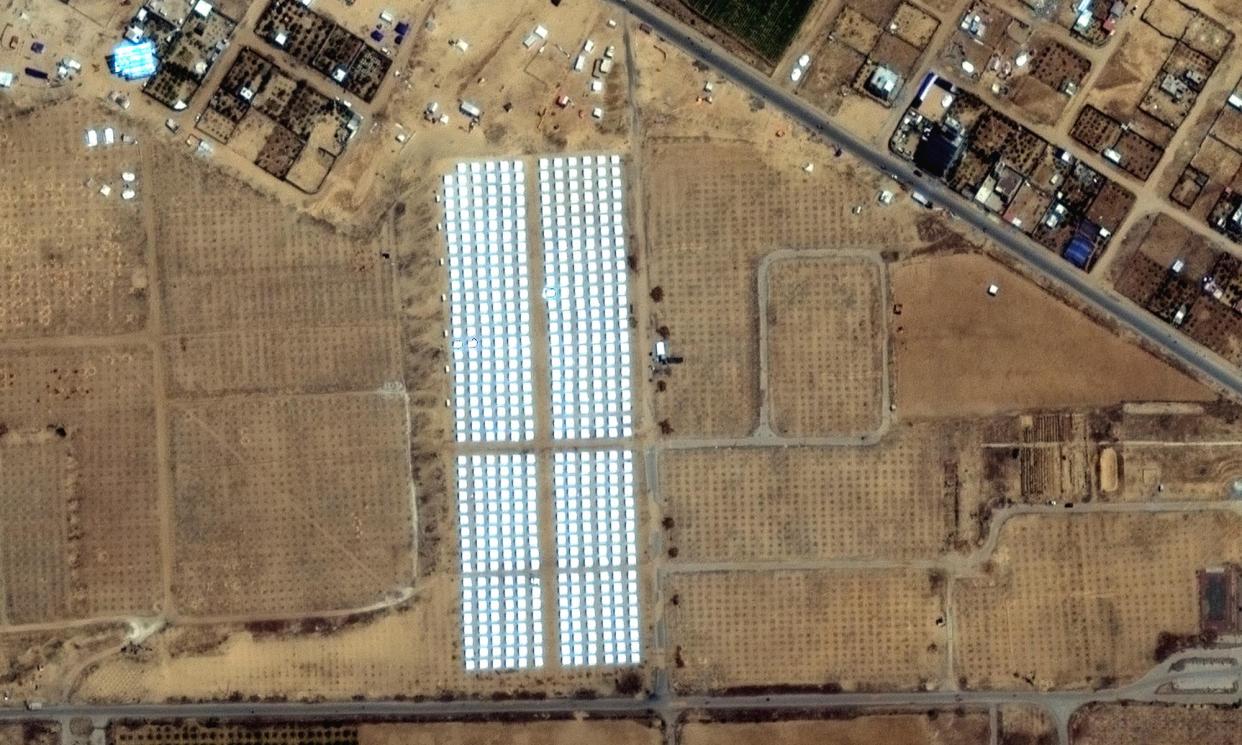Israel thought to be preparing to send troops into Rafah

Israel appears to be readying to send troops into Gaza’s southernmost city of Rafah, the only corner of the strip that has not seen fierce ground fighting and where more than half of the Palestinian territory’s population of 2.3 million has sought shelter.
The Israeli military said on Wednesday that two reservist brigades had been mobilised for missions in Gaza, while video that circulated online appeared to show rows of square white tents going up in Khan Younis, 3 miles (5km) north of Rafah, which was decimated in a months-long Israeli air and ground campaign.
The apparent mobilisation came as Hamas, the militant group that seized control of Gaza in a brief civil war with the Fatah faction in 2007, released a video of Hersh Goldberg-Polin, a 24-year-old Israeli-American who was abducted from the Nova festival during the group’s attack on southern Israel on 7 October.
Goldberg-Polin, who was missing his left arm below the elbow, said in the propaganda video that 70 hostages had been killed in Israeli bombings, and asked that the Israeli government brought the surviving hostages home. The video is not dated, but it appeared to have been filmed in the last few days as Goldberg-Polin said he had been held captive for “nearly 200 days”.
Israeli officials have estimated that 129 of the roughly 250 people abducted on 7 October remain in Gaza, including 34 who the military has said are dead.
Israel said that Hamas’s leadership, along with four battalions of fighters, were camped out in Rafah, using Israeli hostages as human shields, and that a ground operation was necessary for “total victory” over the Palestinian militant group and to bring the hostages home.
But the long-threatened plan to attack Rafah has drawn intense opposition from Israel’s allies, including the US, which said it would cause thousands of civilian casualties and further disrupt aid deliveries.
Any large ground operation in Rafah would almost certainly need to be coordinated with Washington and Cairo, given the town’s location on the Egyptian border.
The Israel Defense Forces (IDF) said last week it was acquiring 40,000 tents to prepare for the evacuation of hundreds of thousands of displaced civilians, and there were unconfirmed reports that extra artillery and armoured personnel carriers had been deployed to the Gaza Strip periphery.
Israel’s prime minister, Benjamin Netanyahu, and his war cabinet were expected to meet in the next two weeks to authorise civilian evacuations, which are expected to take about a month, as the first stage of the Rafah offensive, Israeli media outlets said on Wednesday.
Ceasefire talks mediated by the US, Egypt and Qatar have all but collapsed as Israel and Hamas have been unable to agree on the conditions and length of a truce and the identities and numbers of Israeli hostages to be released in exchange for freeing Palestinians held in Israel jails. A ceasefire held at the end of November collapsed after a week.
More than 34,000 Palestinians have been killed in the latest war between Israel and Hamas, according to the health ministry in the militant-run territory. About 1,200 Israelis were killed and 250 taken hostage in the 7 October attacks that started the war, according to Israeli data.

 Yahoo News
Yahoo News 